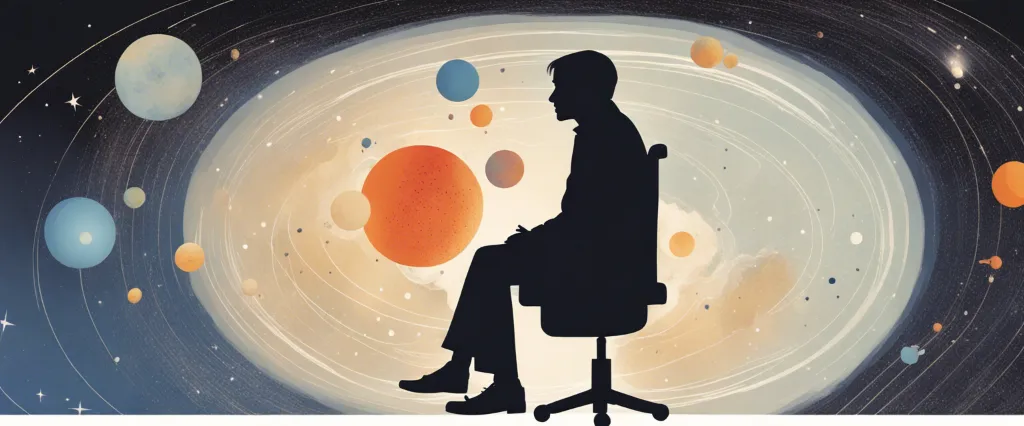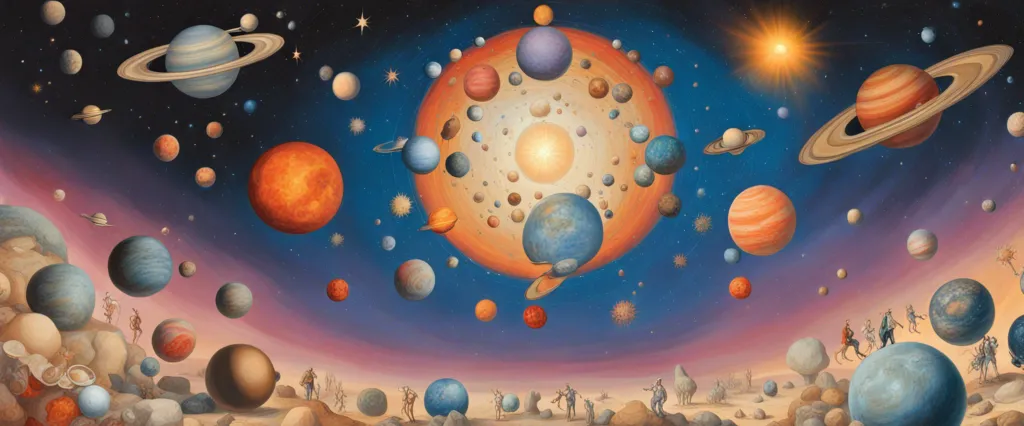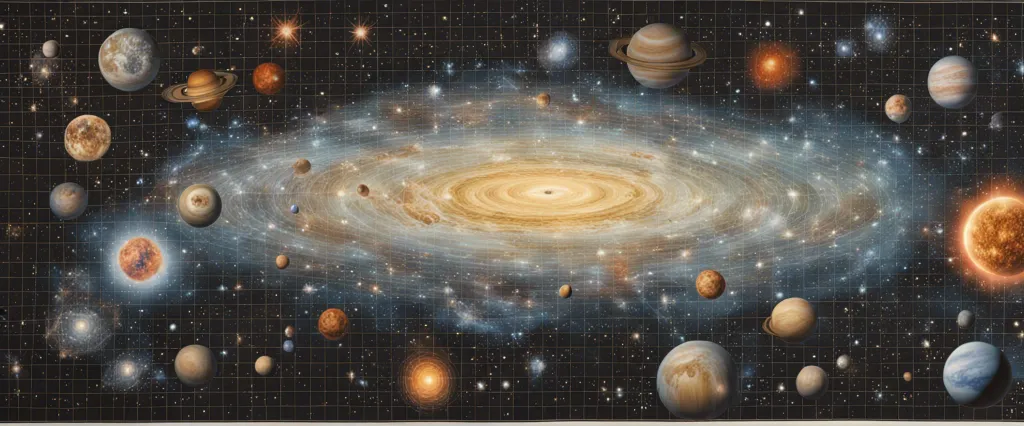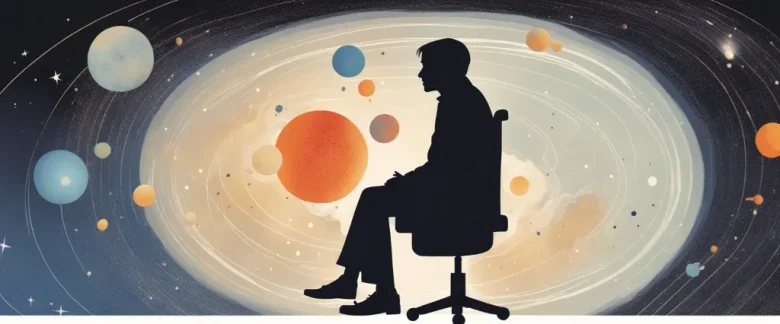
In “The Universe in a Nutshell,” Stephen Hawking sifts through the vast tapestry of scientific knowledge, aiming to provide a comprehensive yet accessible understanding of our universe. With his characteristic wit and brilliance, Hawking delves into topics ranging from the birth of the cosmos to the mysteries of black holes and the search for a unified theory of everything. Renowned for his groundbreaking work as a theoretical physicist, cosmologist, and bestselling author, Stephen Hawking’s relentless pursuit of knowledge and extraordinary contributions have solidified his status as one of the most influential minds of our time.
Chapter 1: The Big Bang and the Origins of the Universe
Chapter 1: The Big Bang and the Origins of the Universe of the book “The Universe in a Nutshell” by Stephen Hawking delves into the fundamental questions surrounding the birth and evolution of our universe.
Hawking begins by discussing the famous discovery that our universe is expanding. He introduces the concept of the Hubble constant, which measures the rate of the universe’s expansion. Utilizing this knowledge, scientists were able to trace back the expansion of the universe and hypothesize that it all began with a single point of infinite density known as the singularity.
He then delves further into the concept of the Big Bang, explaining that this singularity marked the birth of the universe approximately 13 billion years ago. Hawking describes how the universe rapidly expanded from this dense point, filling with matter and energy.
Next, Hawking explores the role of the four fundamental forces: gravity, electromagnetism, and the strong and weak nuclear forces. He explains that these forces governed the behavior and interactions of matter within the expanding universe. Hawking further emphasizes the incredible precision required for these forces to allow the universe to form stars, galaxies, and everything we observe today.
Furthermore, Hawking introduces the idea of inflation, a theory that suggests the universe experienced a brief, exponential expansion just moments after the Big Bang. He highlights how this theory helps explain the observed uniformity of the universe on a large scale.
In conclusion, Chapter 1 provides an overview of the Big Bang theory, the expansion of the universe, the fundamental forces, and the concept of inflation. It sets the stage for further exploration into the mysteries and complexities of our vast universe.
Chapter 2: The Nature of Space and Time
Chapter 2: The Nature of Space and Time delves into the fundamental questions surrounding the concepts of space and time, examining their properties and the different theories proposed by physicists over the centuries.
The chapter begins by revisiting the ancient Greek philosopher Aristotle’s belief that space was a fixed and unchanging backdrop against which all events occurred. However, it was Galileo Galilei who challenged this view and introduced the idea of a dynamic space, capable of changing through motion. Furthermore, Isaac Newton expanded on Galileo’s work, developing the concept of absolute time that flows uniformly throughout the universe, independent of any objects or events.
Stephen Hawking then introduces Albert Einstein’s revolutionary theory of relativity, which significantly changed our understanding of space and time. According to Einstein, space and time are not separate entities but rather part of a single unified structure known as spacetime. Importantly, the theory of relativity dispelled the concept of absolute time and introduced the idea of time dilation, where time can be experienced differently depending on one’s velocity or proximity to massive objects.
The chapter further explores the theoretical framework of spacetime and its connection with gravity. Hawking explains that massive objects distort the fabric of spacetime, causing what we perceive as gravitational forces. This notion is explained through Einstein’s field equations, which describe the interaction between matter and the curvature of spacetime.
Hawking also touches on quantum theory, stating that there is no complete theory yet that reconciles general relativity with the principles of quantum mechanics. He highlights the need for a unified theory that encompasses both, as it would allow us to understand space and time at scales that were previously inaccessible.
In summary, Chapter 2 presents a historical overview of our understanding of space and time, from Aristotle’s fixed backdrop to Einstein’s revolutionary concept of spacetime. It emphasizes the interconnection between matter, gravity, and the curvature of spacetime and discusses the challenges in unifying general relativity and quantum mechanics.
Chapter 3: Black Holes and Wormholes
Chapter 3 of “The Universe in a Nutshell” by Stephen Hawking explores the fascinating phenomena of black holes and wormholes. Hawking starts by explaining that gravity is associated with the curvature of spacetime. Massive objects like stars and planets create a disturbance in spacetime, causing other objects to move around them due to the curvature.
Hawking delves deeper into the concept of black holes, which are regions in spacetime where gravity is so intense that nothing, not even light, can escape its grasp. He explains how black holes form from the gravitational collapse of massive stars, where their core collapses under its own gravity. The collapse creates a singularity, a point of infinite density at the center of the black hole.
Hawking then introduces the concept of event horizons, which are the boundary surrounding a black hole. Anything that passes this point is forever trapped within the black hole’s gravitational pull. Interestingly, Hawking reveals that black holes can emit radiation, which he termed “Hawking radiation.” This emitted radiation gradually causes the black hole to lose its mass and eventually evaporate.
Moving on, Hawking explores the possibility of using black holes as gateways to other parts of the universe through the existence of wormholes. Wormholes are hypothetical shortcuts through spacetime that connect different regions or even different universes. However, Hawking notes that wormholes are highly unstable and tend to collapse before anything can pass through them.
In summary, Chapter 3 of “The Universe in a Nutshell” provides an overview of black holes as regions of intense gravity that trap everything, including light. Hawking introduces the concept of event horizons and the emission of Hawking radiation, leading black holes to gradually evaporate. Additionally, he touches on the idea of wormholes as potential shortcuts in spacetime but notes their instability and tendency to collapse.
Chapter 4: The Quantum World

Chapter 4 of “The Universe in a Nutshell” by Stephen Hawking explores the quantum world, which is occupied by particles such as electrons and quarks. The chapter begins by introducing quantum theory, which revolutionized our understanding of the microscopic world in the early 20th century.
Hawking explains that classical physics fails to adequately describe the behavior of particles at the quantum level. He discusses the concept of particle-wave duality, highlighting how particles can exhibit both wave-like and particle-like properties. This duality is exemplified by the famous double-slit experiment, where particles can pass through two slits and create an interference pattern just like waves.
The notion of uncertainty also plays a crucial role in quantum theory. Hawking delves into Heisenberg’s uncertainty principle, which states that there are limits to how precisely we can measure certain pairs of properties, such as position and momentum, simultaneously. This uncertainty is not due to measurement errors but is inherently built into the fabric of the quantum world.
Furthermore, the chapter explores the concept of quantum superposition, where particles can exist in a combination of different states until they are observed. This leads to the mysterious phenomenon of quantum entanglement, where particles become interconnected and share properties regardless of distance. Hawking discusses how this phenomenon challenges our notions of causality and invites further exploration.
In Chapter 4, Hawking also touches upon the various interpretations of quantum theory, including the Copenhagen interpretation and its emphasis on the role of observation. He highlights the significance of quantum mechanics in technological advancements, such as the development of transistors and lasers.
Overall, this chapter provides an introduction to the profound and puzzling realm of quantum mechanics, revealing the fascinating phenomena and philosophical questions that arise when studying the quantum world.
Chapter 5: The Search for a Theory of Everything
In Chapter 5 of “The Universe in a Nutshell” by Stephen Hawking, titled “The Search for a Theory of Everything,” Hawking delves into the quest for a unified theory that can explain all aspects of the universe. He begins by highlighting how currently accepted theories, such as general relativity and quantum mechanics, have their limitations and are incompatible with each other.
Hawking discusses the significance of unification in scientific theories, referring to the historical progress made in merging electricity, magnetism, and light into a single theory. He explores the possibility of finding a theory that unifies the four fundamental forces of nature: gravity, electromagnetism, and the strong and weak nuclear forces.
Next, Hawking introduces string theory, which proposes that the fundamental particles of the universe are not point-like objects but rather tiny strings. He explains how the different vibrations of these strings can give rise to various particles. However, string theory is still a work in progress, and no experimental evidence has confirmed its validity.
Hawking also discusses the concept of supersymmetry, which suggests that each particle we know has a partner with different quantum properties. Supersymmetry could help resolve some of the issues faced by string theory and provide a consistent framework for a Theory of Everything.
Additionally, Hawking talks about the potential existence of extra dimensions beyond the familiar four (three spatial and one temporal). These extra dimensions may be “curled up” and undetectable at our scale, but their influence holds the key to understanding the forces of nature.
Overall, Chapter 5 emphasizes the ongoing scientific pursuit to find a unifying theory capable of explaining the intricate workings of the universe, and how concepts such as string theory, supersymmetry, and extra dimensions play crucial roles in this ongoing search.
Chapter 6: The Multiverse and Parallel Universes
In Chapter 6 of “The Universe in a Nutshell,” Stephen Hawking delves into the concept of the multiverse and parallel universes. He explores the idea that our universe may not be the only one, but rather just one of many universes – each with its own set of physical properties and laws.
Hawking begins by discussing the concept of inflation, a theory put forth to explain the uniformity and flatness of our universe. According to inflation theory, our universe underwent a rapid expansion phase shortly after the Big Bang, leading to the formation of different regions or “bubbles” with potentially different laws of physics. This suggests the existence of a vast multiverse composed of multiple independent universes.
Moreover, Hawking explains the concept of the “landscape of possibilities,” where the physical laws and constants within each universe may vary. He argues that the specific values of these laws and constants are a result of random chance, leading to an enormous range of possible universes. Thus, it is conceivable that there are other universes within the multiverse that are vastly different from our own.
Hawking then explores the idea of parallel universes, proposing that they may exist as separate entities, running alongside our own. He discusses the possibility of parallel universes being in different dimensions or even a mirror image of our universe. These parallel universes might have fundamental particles and forces that are different from our universe, leading to variations in the laws of physics.
In conclusion, Chapter 6 of “The Universe in a Nutshell” introduces the mind-bending possibilities of a multiverse comprised of various universes, each with its own unique laws of physics. This concept expands our understanding of the universe and opens up intriguing questions about the nature of reality and our place within it.
Chapter 7: The Future of the Universe
Chapter 7: The Future of the Universe in Stephen Hawking’s book “The Universe in a Nutshell” discusses the potential outcomes and ultimate fate of our universe.
Hawking begins by explaining that the future of the universe depends on three key factors: the rate of expansion, the amount of dark matter, and the cosmological constant. He describes three possible scenarios for the universe’s future based on these factors.
Firstly, if the universe continues to expand at an accelerating rate due to an increasing cosmological constant, galaxies will eventually move away from each other at such high speeds that they will become isolated. This will result in a “dark age” where the universe becomes an empty, cold expanse with no visible galaxies or stars.
Secondly, if the rate of expansion slows down but never comes to a halt, the universe will reach a state of maximum entropy. It will become uniform, empty, and lifeless due to the dissipation of energy. This scenario, known as the “Big Freeze,” would result in a universe devoid of any organized structures.
Lastly, if the expansion of the universe slows down and eventually reverses, leading to its collapse, a “Big Crunch” will occur. In this scenario, the universe will contract and become extremely dense, ultimately ending in a singularity similar to the Big Bang. However, Hawking suggests that the possibility of a Big Crunch is less likely as recent observations indicate an accelerating expansion.
Hawking also briefly discusses the possibility of multiple universes and how they could exist within a larger structure called the “multiverse.” He outlines how these universes might interact with each other through gravitational forces.
In conclusion, Hawking presents these three scenarios for the future of the universe and emphasizes the need for further scientific research and observations to determine which fate awaits our universe.

Chapter 8: The Ultimate Questions of Existence
In Chapter 8 of “The Universe in a Nutshell,” Stephen Hawking delves into the ultimate questions of existence. He explores the possibility of human understanding and knowledge reaching a fundamental theory of everything that could explain the universe comprehensively.
Hawking starts by discussing the concept of a unified theory, which would merge or reconcile the theories of general relativity (which describes large-scale cosmic phenomena) and quantum mechanics (which describes the behavior of subatomic particles). While scientists have made substantial progress in each of these areas, a complete unification still eludes us.
He introduces the notion of “M-theory,” an advanced framework that could potentially provide the answers to the deepest questions about our reality. M-theory proposes that the fundamental building blocks of the universe are not particles but rather one-dimensional objects called “strings.” These strings vibrate in different ways, producing various particles and forces.
Hawking further elaborates on how M-theory incorporates the concept of multiple dimensions, which goes beyond the familiar three spatial dimensions (length, width, height). He suggests that there may be extra dimensions curled up and hidden from our perception, making them incredibly challenging to detect.
The chapter concludes with Hawking acknowledging that the complete understanding of existence might always be just out of reach. He emphasizes the importance of continued scientific exploration and the possibility of future breakthroughs which could help us unravel the mysteries of the universe.
Overall, this chapter delves into the quest for a comprehensive theory that can explain all the fundamental aspects of our universe, touching on M-theory and the potential existence of hidden dimensions. Hawking’s exploration encourages readers to contemplate the ultimate nature of our reality and the ongoing pursuit of knowledge.
After Reading
In conclusion, Stephen Hawking’s book, The Universe in a Nutshell, offers a captivating and insightful exploration of the mysteries and complexities of the universe. Through a masterful blend of science and theoretical physics, Hawking presents a wealth of knowledge in a concise and accessible manner. From the origins of the universe to the concept of time travel and multiple dimensions, Hawking delves into various theories and progresses the reader’s understanding of the fundamental workings of our reality. This book serves as a brilliant testament to Hawking’s immense intellect and ability to engage readers by unraveling the wonders of the universe, leaving us with a newfound awe and curiosity about our place in the cosmos.
1) “Sapiens: A Brief History of Humankind” by Yuval Noah Harari – This highly acclaimed book takes readers on an engaging journey through the history of humanity, exploring how our species developed, the impact of key events, and the potential future of Homo sapiens.
2) “To Kill a Mockingbird” by Harper Lee – A literary masterpiece, this novel delves into themes of racial injustice, moral courage, and the power of empathy. Set in the Deep South during the 1930s, it offers a thought-provoking perspective on society through the eyes of a young girl.
3) “The Alchemist” by Paulo Coelho – This enchanting tale follows a shepherd boy’s journey to discover his personal legend, teaching readers valuable lessons about following their dreams, listening to their hearts, and finding meaning in life’s simplest moments.
4) “The Great Gatsby” by F. Scott Fitzgerald – An iconic American classic, this novel explores the glitz and glamour of the Jazz Age, while delving into themes of love, wealth, and the relentless pursuit of the American Dream. Fitzgerald’s lyrical prose and complex characters make it a must-read.
5) “The Kite Runner” by Khaled Hosseini – Set against the backdrop of Afghanistan’s tumultuous history, this emotionally charged story follows the friendship between two boys from different social classes. Hosseini skillfully weaves a tale of redemption, sacrifice, and the power of love in the face of political turmoil.



